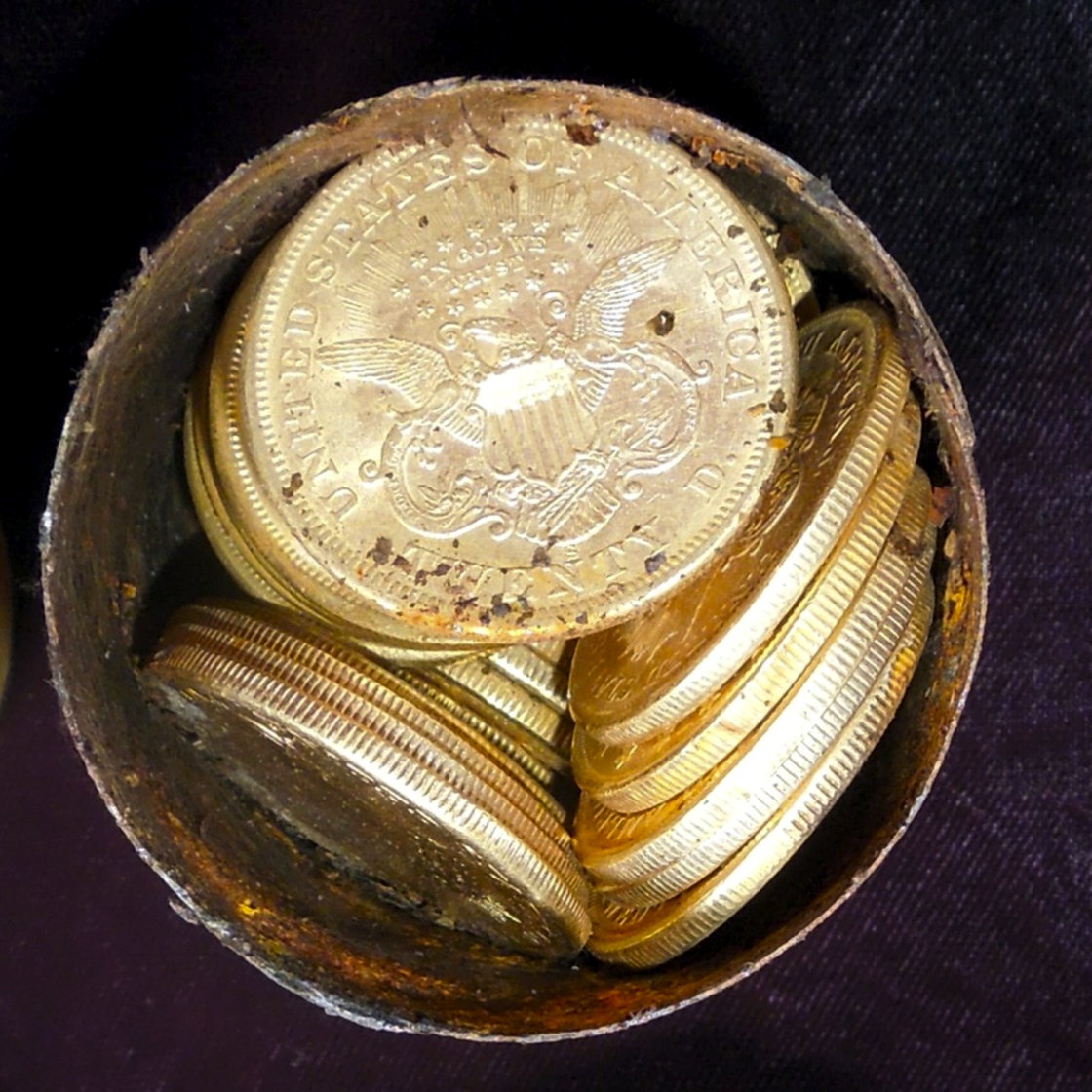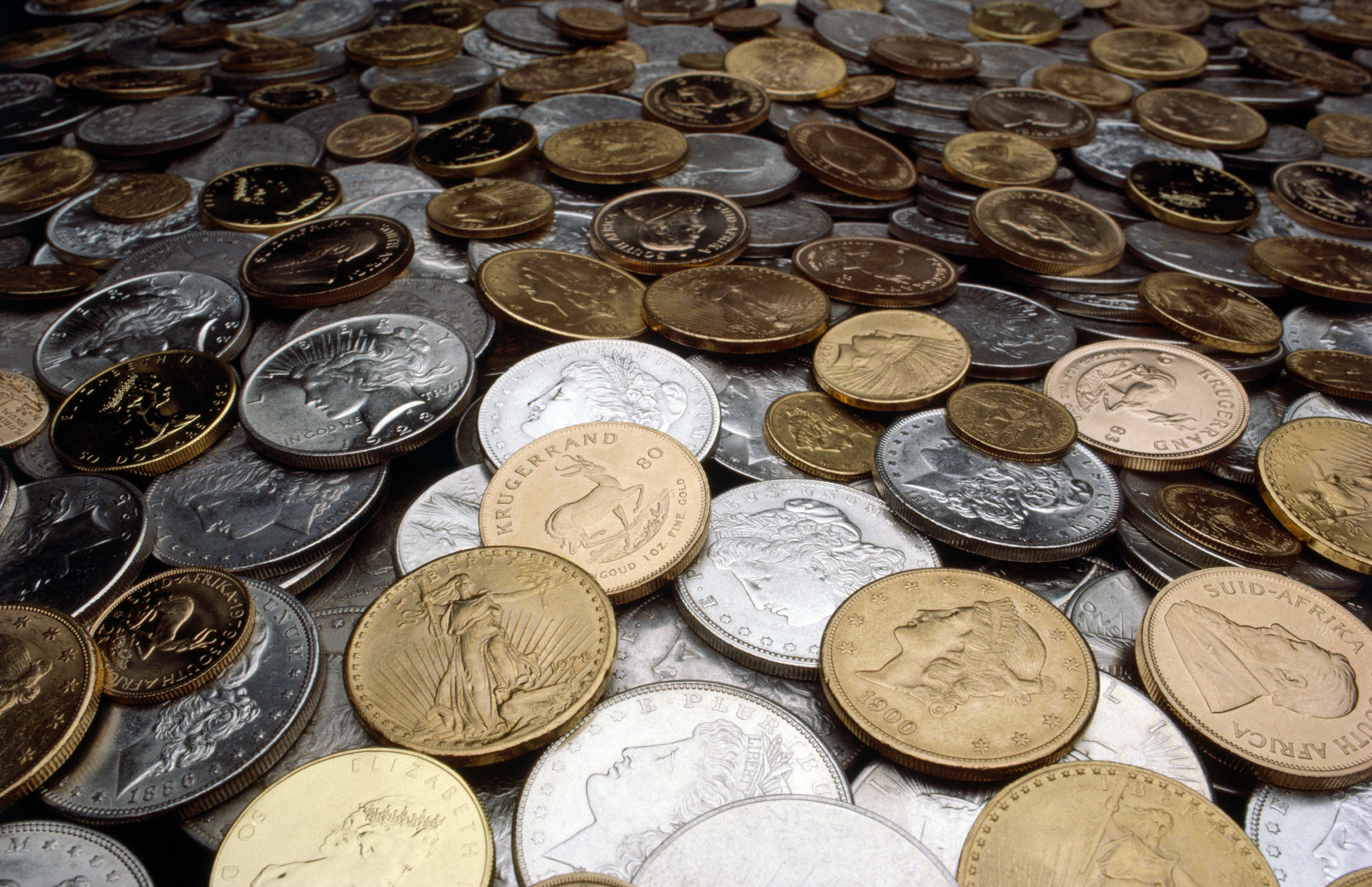Valuable Coins In Circulation
- Rarest Coins In Circulation
- 1794 Flowing Hair Silver Dollar: Silver Plug (Unique And Extremely Rare)
- Rarest Coins In Circulation Uk
 If you still pay for your purchases in cash, there’s a good chance that you always have spare change hanging about. While that pocket of coins can be obnoxious, not all of them are useless. There are plenty of coins found in pocket change than can be worth a good deal of money.
If you still pay for your purchases in cash, there’s a good chance that you always have spare change hanging about. While that pocket of coins can be obnoxious, not all of them are useless. There are plenty of coins found in pocket change than can be worth a good deal of money.Silver Half Dollars
Most people don’t see silver dollars in their normal pocket change, but every once in awhile you’ll receive one. Some people like to get rolls of them from the bank merely for the sake of putting them back into circulation. Most people know that dimes and quarters minted 1964 and before were silver and those 1965 and after didn’t have any silver. Half dollars dated earlier than 1964 were made of 90% silver, but unlike the dimes and quarters that contained no silver from 1965 on, half dollars made between the years 1965 and 1970 were made of 40% silver. Many people don’t know this and assume that the half dollars from 1965 – 1970 have no silver content, so they may spend it as if it were only worth fifty cents. If you’re shopping, it’s even worthwhile asking if the cashier has any half dollars in the register that you can have as change. If you do find one of these 40% silver half dollars in your change, it will be worth several times its face value.
Some State Quarters
The Royal Mint has revealed the rarest 50p coins in circulation, presumably fuelling a desperate rummage down the back of the nation’s sofas. It released the top 10 rankings ahead of the 50th anniversary of decimalisation, which comes on 15 February – the Decimal Day changeover of 1971 inspired many people to become coin collectors over the years. As a basic rule, the more valuable the “normal” version of a coin, the less of a premium another variety of that coin will have. For example, a Lincoln cent from 1917 in Very Good condition has a retail value of less than one dollar, but a 1917 Lincoln cent with a DDO in the same grade has a retail value of around $150.
Do you remember when the U.S. State Quarters were being released into circulation? Many people eagerly grabbed rolls of them from the bank thinking that would be worth a lot of money down the road. Of course, the state quarters were not without issue when they were circulated. There are a lot that have printing errors which sometimes include double dies, poor mint marks, or images that are missing or incorrectly added. These error coins can be worth a lot of money, so make sure you check out any state quarters that happen to be in your pocket change.
Error Coins
If you ever do a search online for “error coins in circulation”, you’ll find a pretty long list of coins that you could happen to find in your pocket chance. A large number of people happen across error coins and give them away when they pay for their purchases, thinking that there’s nothing too unusual about the coin. The value of error coins ranges depending on the error, coin, and year, but it’s worth checking over your pocket change to see if there’s anything unusual about the coins you have.
1955 Double Die Penny
The estimated value of the 1955 double die penny is anywhere between $300 and $25,000+. Double die coins are created when there’s a misalignment during the production of a coin. A circulated version of the 1955 double die penny is worth $1000+, while the uncirculated version can be worth well over $25,000. The reason this penny is so valuable is because there is an obvious doubling of the letters and numbers on the face of the coin. More than 20,000 are thought to be in circulation, so start checking your pennies!
1965 Silver Dime
Silver dimes were discontinued in 1964, as they started to be made from copper and nickel in 1965. However, there are still a few silver dimes that were made in 1965. A couple have been found in circulation and are worth over $9,000.
Wheat Pennies

Have you ever seen a wheat penny amongst your pocket change? Almost everyone has received a wheat penny before and has probably given it away without a second thought. While not all wheat pennies are valuable, some can fetch a pretty high price when sold to a collector. This guide can help you figure out whether or not the wheat pennies in your pocket change are worth anything.
Repunched Mint Marks
Just as there are many coins with die errors on them, there are also a lot of coins in circulation that have missing or repunched mint marks. A repunched mint mark is punched into a coin die more than once, making the coin look as if it has a doubled mint mark. The value of these coins varies, so if you find one, make sure to research its worth being taking any action.
/most-valuable-coins-in-pocket-change-768897v3-24649f56e67a40779a61d9b454e2ac3f.jpg)
Wide “AM” Penny
On the back of most pennies, the A and M in AMERICA are touching. On some pennies, most notably during 1998, 1999, and 2000, there were errors on coins and there’s a wide separation between the A and M on the reverse of the coin. This was caused by the use of a proof die on those circulated coins. These coins vary in value price, but the rarest and most valuable are the 1999 Wide AM pennies.
Small and Large Date Coins
Have you ever happened upon a coin where the date seemed larger or smaller than normal? Maybe you just thought it was your imagination. Except, many times the dates are smaller or larger due to printing errors. These coins vary in value, so it’s worth it to keep any aside instead of sending them back into circulation.
1943 Copper Penny
A lot of people think that pennies are a waste and should be removed from circulation. However, pennies with die errors or special metals can be worth quite a lot of money. For instance, the 1943 copper penny can be worth up to $200,000. This particular penny is so valuable because few were made before all copper was redirected toward war efforts and pennies were struck in steel from . There’s an estimated 40 to 50 1943 copper pennies still in circulation.
Rarest Coins In Circulation
For more on this check out which pennies are worth more than once cent and 20 great places to find coins.
/https://public-media.si-cdn.com/filer/bc/e5/bce53cee-f103-4f25-a876-4ba3c5ed010c/coin.jpg)
You may not know it, but you may actually be spending a fortune on your value meals or favorite chocolate bar. Don’t believe it? Well, if you haven’t been looking at those loose change in your pockets closely, you may be unwittingly throwing away valuable error coins that could sell several hundreds of dollars. Believe it or not, there are valuable coins going around in circulation and unknowing people use them in paying for a dollar worth of junk food. So how do you avoid this mistake, which could have been your ticket to earning a fortune? Well, the answer is simple. Just take a few minutes of your time and examine those coins in your loose change. Practice this regularly, make it a habit, and then who knows? You may luckily chance upon a silver coin worth thousands of dollars! But of course, you have to know what you are looking for and how to look for it. So, here are a few tips to help you get started.
Photo: Coins found in pocket change
The first thing you have to do is to familiarize yourself with different silver coins. Arrange those loose coins according to denomination and take a close examination of their details. Arranging your coins this way will make memorizing the features of the coins easier and enable you to eventually notice differences faster, should there be any. To get a better look, you may want to invest in a good magnifying lens, which doesn’t cost that much. This will help you a great deal in seeing the details of each coin.

Now that you are familiar with the different denominations of silver coins, you can start looking for the differences and errors in coins that make them unique and valuable. Features that you have to watch out for are the date and mintmarks, the edge, and the die rotation, among others. Common mistakes are usually found in these features.
The mintmarks are sometimes overpunched or punched. Overpunched mintmark consists of two different mintmarks, one of which was punched over the other. On the other hand, a double punched mintmark consists of one mintmark that was punched twice. The edge of a coin is usually reeded and possible not on the coin you are inspecting. You may look for missing reeded edges, lines, seams and whatever out of the ordinary on the edge. There are also coins that bear inscriptions on the edge. In this case, you may look for missing letters or the whole inscription sometimes.
The die rotation is the alignment of the obverse and the reverse side of the coin. Check if the die rotation is correct. If you turn the coin from side to side, the other side should be upside down. If you turn it from top to bottom, the other side should be right-side-up as well. On the whole, look for anything unusual on the obverse and reverse side of the coin. Watch out for any doubling on the inscriptions or the portrait image itself. Are there double-struck or missing letters? Is there any excess on the images? Like an additional leaf, flower, or doubled earlobes perhaps?
1794 Flowing Hair Silver Dollar: Silver Plug (Unique And Extremely Rare)
These are just simple but very useful tips if you make it part of your routine. These very simple steps can make you a fortune should a valuable coin luckily falls into your pocket.